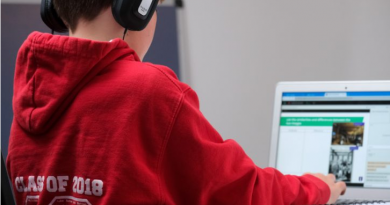What it Takes to Lead a School Where Students Love Themselves and Succeed Academically
As a 2022 fellow of The National Fellowship for Black and Latino Male Educators, I attend an annual retreat designed to provide fellows and alums with support and resources to reach the common goal of becoming education leaders. The event includes leadership development skills, offers a psychologically safe space to process our experiences, and nurtures the spirit of brotherhood and community needed to sustain our worth and our work.
At this year’s retreat, Lester Young Jr., chancellor of the New York State Board of Regents, inspired us with the noble story of his journey as a Black male education leader and gave us tremendous insight into the value of stepping into leadership boldly. In the midst of his presentation, he posed a question to the group that deeply resonated with me: Are you comfortable leading a school where kids love themselves but fail academically?
Ithoughtht to myself, “Of course, I am,” knowing that if I had to choose between leading a school where kids love themselves or are academically successful, I’d prioritize self-lolingered evenquestion lingered, even after I left the retreat. After a wwonderedI found myself wondering why we couldn’t do both.
Across the country, many schools that understand the value of teaching students self-love — which The American Psychological Association defines as a “regard for and interest in one’s being or contentment” — are incorporating social-emotional learning (SEL) into curricula due to the positive effects it has on student contentment, including boosting self-esteem, self-efficacy, and perseverance. Research suggests that when exposed to a learning environment that prioritizes the well-being of the whole child, not just their academic performance, students bdeveloptimistic, and perceptive. In essence, they develop a greater sense of self-love — meaning they understand what contributes to their well-being and can take steps to foster it.
While there’s evidence that SEL benefits character development and personhood, these skills are not explicitly assessed nmakin’,stematically tracked across American schools making it difficult to see broader impacts and best practices. Student success is often defined by whether a learner demonstrates achievement on what my grandmother called the “3 R’s: Reading, Writing and Arithmetic” — the core academic skills needed to illustrate mastery on standardized assessments.
This is a dilemma.
Over the years, our country has strived to provide a national standa. Multipleality of education in public schools, and multiple administrations have promoted federal initiatives and national goals to define academic outcomes for American students. I haven’t seen one of them incorporate self-love as a prioritized outcome.
That’s likely because self-love is difficult to assess and measure. It’s not a mastery-based standard, and it hasn’t been given the same weight as crafting a clear argument in an essay or explaining the relationship between photosynthesis and cellular respiration.
There are clearly defined standards and metrics to track and measure student success, yet they depend solely on academic growth, especially in particular content areas. While standardized academic assessments may provide some insight into where a student is academically, these assessments just don’t show the full picture of how a human develops.
Codifying self-love and identifying ways to capture growth is key to student progress. While we haven’t seen systemic consolidation around a set of standards, pillars, or guidance around many of these tougher-to-gauge areas of development, we can learn from organizations and individuals making valiant efforts to move the field forward.
Over the years, luminaries in education have researched and acknowledged the nonacademic non-negotiables that lead to strong student outcomes. Many of the leaders who have shaped my philosophy on teaching and learning have offered research, insights, and resources that bolster the importance of developing a strong sense of self, which is a key ingredient to the development of self-love.
And this isn’t a new conversation.
In an essay penned in 1935, which has become one of the anchor texts I’ve drawn from throughout my career, W.E.B. Du Bois asserted that “The proper education of any people includes sympathetic touch between teacher and pupil.” His words helped me develop my position that all kids need a loving environment. More recently, in 2020, Bettina Love published a framework and guiding questions for creating classrooms that affirm Black, Latino, and Indigenous children, which I’ve used to broaden my understanding of how to create the conditions where love and acceptance flourish within our school’s culture.
Leaders like Du Bois and Love have shaped my belief that I can lead a school where students love themselves and succeed academically. But until there’s widespread validation of the importance of cultivating these areas precisely and cprecisely apturing progress, I don’t have the data to my school is striking this balance precisely.
That hasn’t stopped us from trying.
When I was a teacher, I was obsessed with finding ways to make my classroom a space where students felt safe and inspired. Now, after almost two years of being the principal at my high school, my obsession remains, but in this role, I’m positioned to support all of the teachers at our school to build learning spaces that foster self-love.
One of the places where I’m doubling down is in how our leadership team coaches our teachers because I believe that supportive leadership sets the stage for great teaching. We’re focused on two main goals:
- Championing an instructional lens that prioritizes the development of the whole child and
- Utilizing best practices that acknowledge the humanity in our children and push them to see the best in themselves.
We support teachers by consistently observing them in their classrooms, doing what they do best: engaging students. During these visits, my leadership team and I use an instructional rubric developed by our network’s teaching and learning team to guide creation of high-quality, high-functioning classrooms.
One component of this rubric is dedicated to assessing the classroom environment, and within this component, there’s something special we look for — we call it “belief and belonging.” My leadership team and I seek evidence of the level of belief and belonging in a classroom by paying attention to the overall tone of the classroom. Is it marked by enthusiasm, love and care, and purposeful focus? Does the teacher frequently recognize and narrate positive behaviors and use challenge and aspiration to motivate students? If so, we have a good indication that students are being respected, which is the foundation for fostering self-love.
The rubric provides us with great guidance, but it’s not enough.
To lead a school where kids love themselves unapologetically and succeed academically, we need national recognition of the importance of self-love and guidance on how to codify, measure, and track this aspect of development in America’s public schools. There must be a common picture principals like me can use to ensure we are developing whole children into whole adults. We need a national movement across states to bring love back into schools.
Source: https://www.edsurge.com/news/2024-01-10-what-it-takes-to-lead-a-school-where-students-love-themselves-and-succeed-academically




